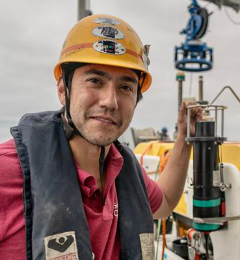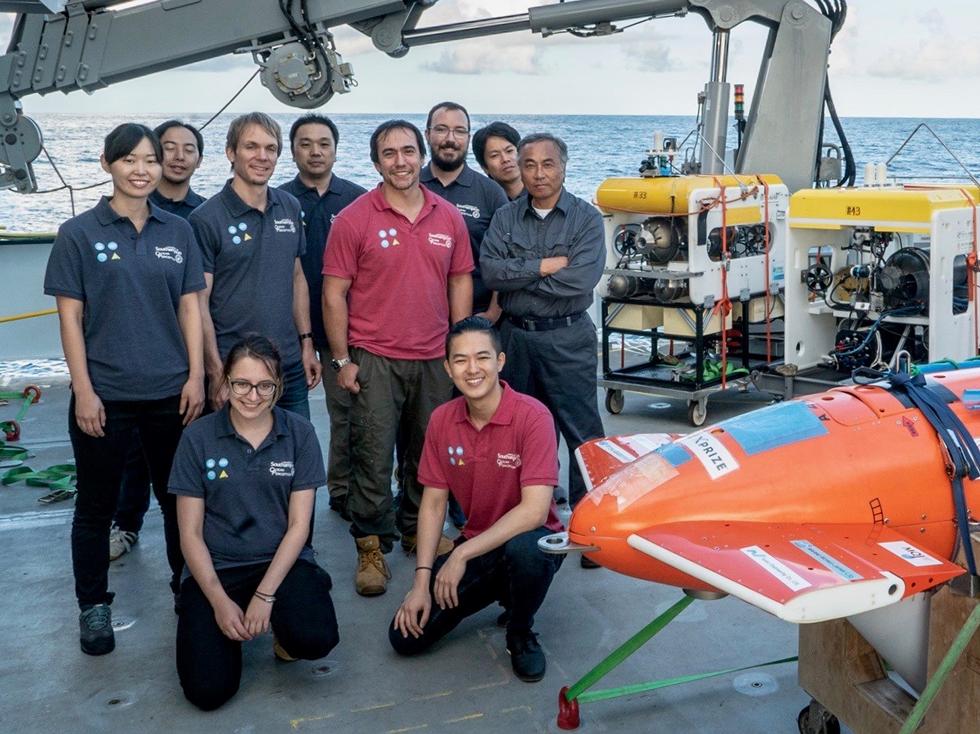Expedition led by SMMI member features on cover of Sea Technology magazine

An expedition led by SMMI member Dr Blair Thornton (Maritime Robotics Laboratory, FSI, EPSRC Innovation Fellow) has been featured as the cover article of the December 2018 issue of Sea Technology magazine.
The article describes the Adaptive Robotics campaign that took place in July 2018, with current UoS members Adrian Bodenmann (FSI, SMMI), Miquel Massot (FSI, SMMI) and PhD students Jennifer Walker (FSI, NEXUSS/LTDS), Jin Wei Lim (FSI, LTDS) and visiting researcher Tomoko Takahashi (Chemistry/IfLS) taking part on board the Schmidt Ocean Institute research vessel Falkor.
During the expedition, multiple autonomous underwater vehicles (AUVs) and a remotely operated vehicle were deployed to generate the largest known visual reconstruction of the seafloor using 3d imaging systems (NE/P020887/1) and perform in situ Laser Raman spectroscopy measurements (NE/R01227X/1). The expedition took place at Hydrate Ridge, located 100 km off Oregon at depths of between 680 to 780m. Hydrate Ridge is a gas hydrate field that is rich in biological activity and is also home to one of the most advanced seafloor cable observatories in the world. More than 1 million images of the seafloor were taken by simultaneously deployed AUVs. These were seamlessly stitched together to generate a sub-centimetre resolution map of the seafloor covering more than 17 hectares. While this is a process that would normally take several months of observation and even longer to process the data, the combination of fast data acquisition using high-altitude underwater imaging systems, high-speed AUVs and advanced data processing algorithms allowed the team to map and generate 3d reconstructions in a couple of days. Furthermore, unsupervised learning algorithms were used to automatically analyse the data and rapidly generate information summaries. This allowed the team to rapidly generate understanding of the seafloor while still out in the field, allowing them to deploy their AUVs in the places that would lead to the biggest gains in knowledge.
Sea Technology is one of the marine industry’s leading magazines with more than 50 years of history and readers in more than 110 countries. A link to the cover can be found here.
A short summary video of the expedition can be seen here.
For more information about Dr Thornton and his team's activities, see here.

